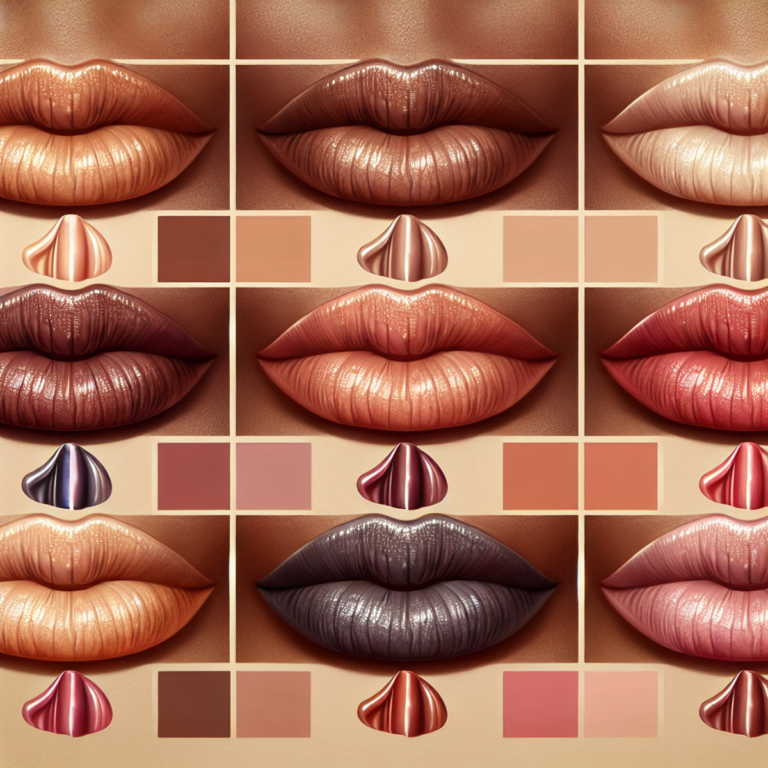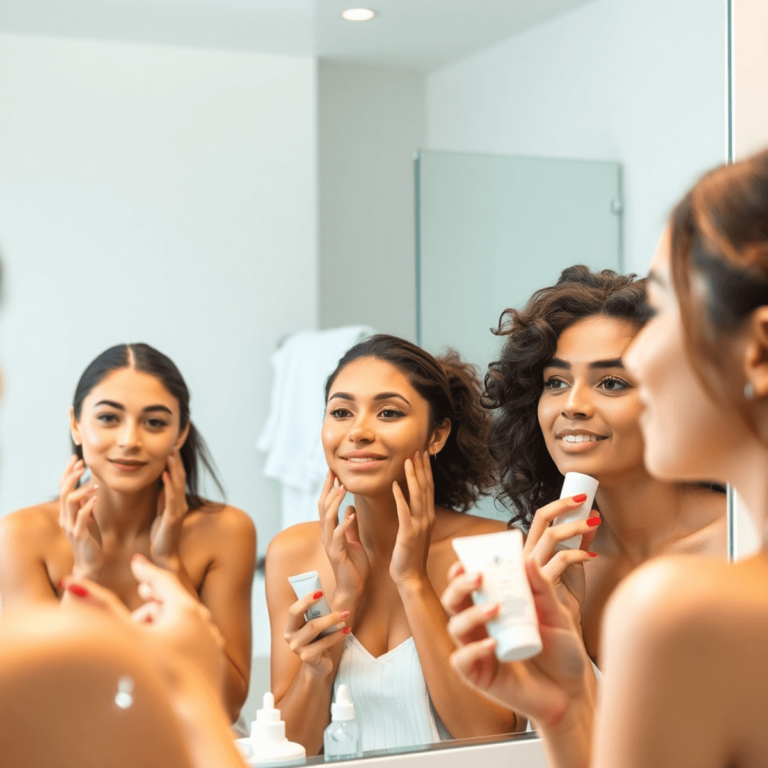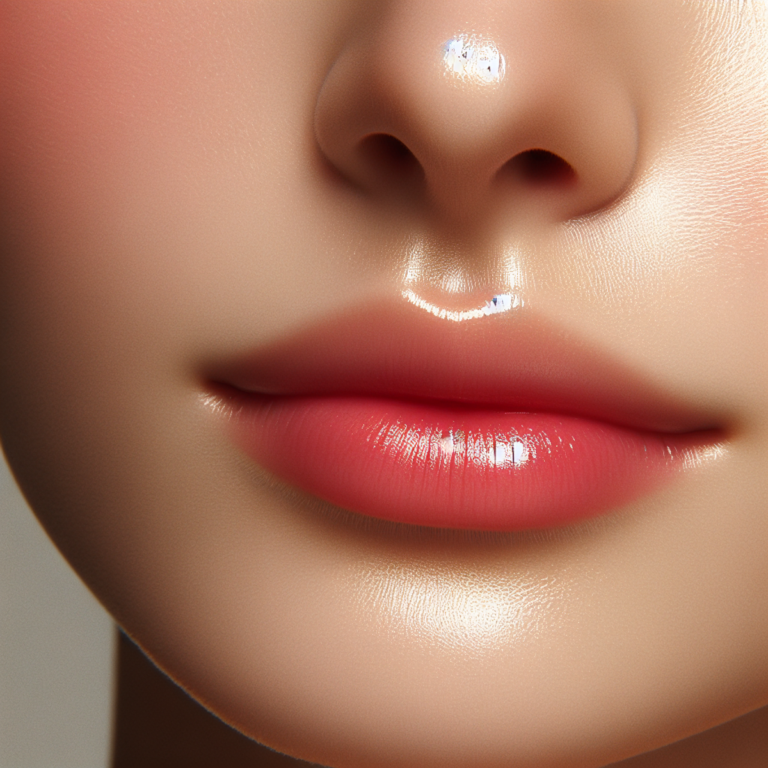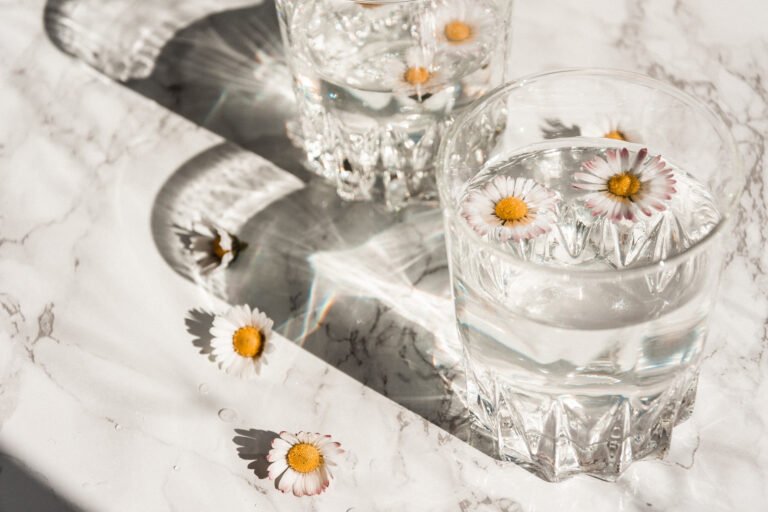How to Get Rid of Pimples: 5 Ingredients to Fight Acne Fast
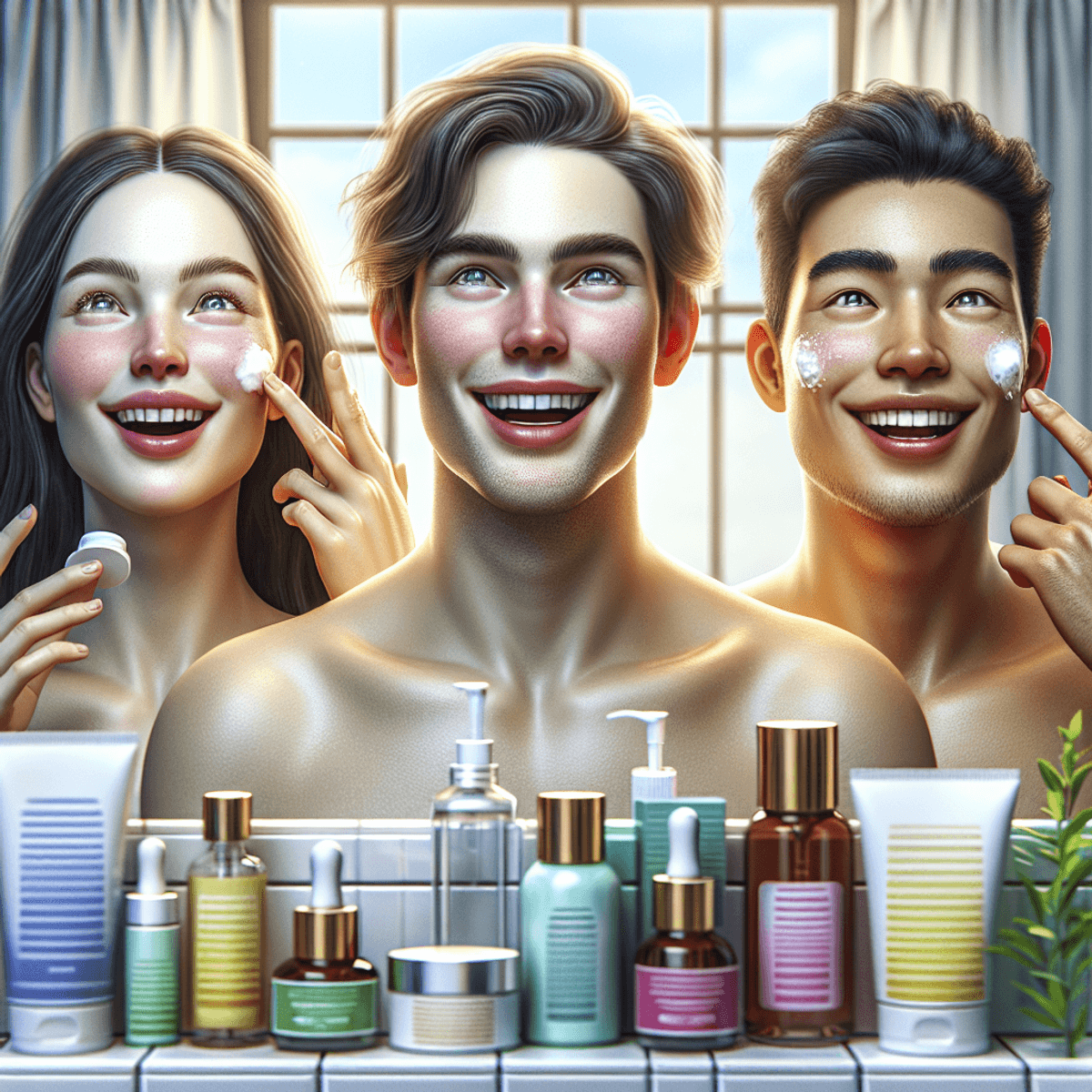
Introduction
Knowing which ingredients are effective can make all the difference when it comes to how to get rid of pimples. This article focuses on five key ingredients that have been scientifically proven to combat acne effectively. By understanding what these ingredients are and how they work, you can take significant steps toward achieving clearer skin.
Acne is a common skin problem that affects millions of people around the world. It usually starts during teenage years but can continue into adulthood. Acne doesn’t just affect how we look; it can also have a big impact on our self-esteem and confidence.
Knowing the right ingredients in skincare products is crucial for effective acne treatment. In this article, we’ll explore:
- Benzoyl Peroxide
- Salicylic Acid
- Tea Tree Oil
- Sulfur
- Witch Hazel
Each ingredient plays a unique role in targeting the various causes of acne. Whether you’re dealing with occasional breakouts or chronic acne, understanding these components will help you make informed decisions about your skincare routine.
Understanding Pimples and Acne
Pimples are an inflammatory skin condition that occurs when hair follicles become clogged with oil and dead skin cells. This blockage creates an environment where bacteria can thrive, leading to red, swollen bumps on the skin’s surface.
Common Causes of Pimples
Several factors contribute to the development of pimples:
- Hormonal Fluctuations: Hormones like androgens can increase oil (sebum) production, which clogs pores.
- Bacterial Overgrowth: The bacteria Propionibacterium acnes (P. acnes) can multiply in blocked pores, causing inflammation.
- Excess Oil Production: Overactive sebaceous glands produce too much oil, leading to clogged pores.
Types of Acne Lesions
Understanding the different types of acne lesions helps in determining the appropriate treatment:
- Whiteheads: Closed comedones that form when a pore is completely blocked.
- Blackheads: Open comedones where the pore is partially blocked, causing the material inside to oxidize and turn black.
- Papules: Small, red, tender bumps caused by inflammation or infection in hair follicles.
- Pustules: Similar to papules but filled with pus, making them appear white or yellow at the center.
- Nodules: Large, painful lumps beneath the skin’s surface caused by severe inflammation deep within hair follicles.
- Cystic Acne: The most severe type; large, painful, pus-filled cysts that develop deep under the skin.
Understanding these nuances can significantly improve your approach to treating and preventing acne effectively.
The Role of Ingredients in Treating Pimples
1. Benzoyl Peroxide
How It Works
Benzoyl peroxide is a key player in acne treatment because it works in several ways:
- Kills Bacteria: The main bacteria causing acne, Propionibacterium acnes, lives on the skin and inside hair follicles. Benzoyl peroxide gets into these follicles and releases oxygen, making it hard for this bacteria to survive.
- Reduces Oil Production: By lowering the amount of oil made by oil glands, benzoyl peroxide helps keep pores from getting clogged. This reduction in oil is important for preventing new acne breakouts.
- Removes Dead Skin Cells: It also has properties that help exfoliate the top layer of skin and get rid of dead skin cells that can block pores.
Forms Available
Benzoyl peroxide comes in different forms designed for various levels of acne severity and skin types:
- Over-the-Counter (OTC): Usually found in strengths from 2.5% to 10%, OTC products are good for mild to moderate acne. You can find these as gels, creams, cleansers, and spot treatments.
- Prescription: Higher strengths or combinations with other ingredients (like antibiotics or retinoids) might be prescribed by dermatologists for more serious cases of acne.
How to Use It
To get the best results while using benzoyl peroxide:
- Start Slowly: Begin with a lower strength so your skin can get used to it. Using too strong a product at first can cause dryness and irritation.
- Frequency: Use once a day at first, then slowly increase to twice a day if your skin handles it well.
- How to Apply:
- Wash your face with a gentle cleanser.
- Pat dry and put a thin layer of benzoyl peroxide gel or cream on the affected areas.
- If using a benzoyl peroxide wash, massage it into the skin for a few minutes before rinsing thoroughly.
Note: Always follow up with a moisturizer to counteract potential dryness and use sunscreen during the day as benzoyl peroxide can increase sensitivity to sunlight.
Incorporating benzoyl peroxide into your skincare routine can greatly improve acne over time. Its ability to tackle multiple causes makes it a highly effective ingredient for achieving clearer skin.
2. Salicylic Acid
Salicylic acid is one of the best ingredients for fighting acne because it can penetrate and exfoliate the skin. As a beta hydroxy acid (BHA), it works by dissolving the bonds that hold dead skin cells together, promoting cell turnover and unclogging pores.
How salicylic acid works:
- Exfoliation: Salicylic acid loosens and removes dead skin cells that can accumulate on the surface of the skin and within hair follicles.
- Pore Unclogging: By penetrating deep into the pores, it helps clear out sebum and debris, reducing the chances of future breakouts.
- Anti-inflammatory: Its anti-inflammatory properties help soothe irritated skin, reducing redness and swelling associated with active pimples.
Different skincare products use salicylic acid as a main ingredient to effectively target acne:
- Cleansers: Ideal for daily use, salicylic acid cleansers help maintain clear pores while removing excess oil and impurities.
- Spot Treatments: Concentrated formulas designed for direct application on active breakouts, offering targeted treatment to reduce pimples quickly.
- Toners: These help in gentle exfoliation and prepare the skin for better absorption of subsequent products.
- Masks: Often combined with other beneficial ingredients, these provide intensive care for acne-prone areas.
When choosing a salicylic acid product, think about your skin type and sensitivity. If you have sensitive skin, it’s best to start with a lower concentration (0.5%-1%). Using it regularly can greatly improve your skin’s texture and reduce breakouts.
Understanding the benefits of benzoyl peroxide compared to salicylic acid emphasizes how important it is to use the right ingredients in skincare products to fight pimples. Each ingredient has its own unique advantages, making them valuable additions to any acne treatment routine.
3. Tea Tree Oil
Tea tree oil is a natural acne treatment known for its antimicrobial and anti-inflammatory properties. These qualities make it a potent ingredient in the fight against pimples. When applied to the skin, tea tree oil helps to reduce the growth of bacteria, which is a common cause of acne. Additionally, its anti-inflammatory effects help to reduce redness and swelling, making active breakouts less noticeable.
Studies have shown that tea tree oil can be as effective as benzoyl peroxide in reducing acne lesions. Unlike benzoyl peroxide, tea tree oil tends to work more slowly but with fewer side effects such as dryness or irritation. This makes it an appealing option for those with sensitive skin or who are looking for a more natural approach to acne treatment.
Key benefits of tea tree oil include:
- Antimicrobial Properties: Helps kill acne-causing bacteria.
- Anti-inflammatory Effects: Reduces redness and swelling associated with pimples.
- Natural Treatment: Fewer side effects compared to synthetic treatments like benzoyl peroxide.
In comparative studies, participants using tea tree oil experienced significant reductions in both the number and severity of acne lesions. This positions tea tree oil as an effective alternative to traditional acne-fighting ingredients like benzoyl peroxide.
When incorporating tea tree oil into your skincare routine, it’s important to use products specifically formulated for acne treatment. Look for topical treatments that contain a 5-10% concentration of tea tree oil for optimal effectiveness. Always perform a patch test before full application to ensure you do not experience any adverse reactions.
Understanding the importance of using the right ingredients in skincare products can significantly impact your journey towards clearer skin. Tea tree oil offers a natural, effective solution for those looking to combat pimples without harsh chemicals.
4. Sulfur
Sulfur is a powerful ingredient that fights acne, a condition it has been used to treat in skincare products for many years. It works mainly by absorbing excess oil and preventing clogged pores, making it particularly beneficial for those with oily and acne-prone skin.
How Sulfur Works:
- Absorbs Excess Oil: Acting as a drying agent, sulfur effectively absorbs the excess sebum that can lead to clogged pores and breakouts.
- Prevents Clogged Pores: By removing dead skin cells and other debris, sulfur helps keep pores clear, reducing the likelihood of pimple formation.
- Antimicrobial Properties: Sulfur also possesses mild antibacterial properties, which help reduce the bacterial load on the skin that contributes to acne.
When comparing sulfur with other commonly used acne-fighting ingredients like benzoyl peroxide and salicylic acid, several key differences emerge:
Benzoyl Peroxide vs. Sulfur:
- Effectiveness: Benzoyl peroxide is known for its rapid action in killing acne-causing bacteria and reducing inflammation. However, it can be quite harsh and may cause dryness or irritation.
- Side Effects: Sulfur tends to be less irritating than benzoyl peroxide but might have a distinct odor that some find unpleasant.
Salicylic Acid vs. Sulfur:
- Mechanism: While salicylic acid excels at exfoliating the skin and unclogging pores, sulfur focuses more on absorbing oil and preventing pore blockage.
- Skin Tolerance: Salicylic acid can sometimes cause dryness or peeling, whereas sulfur is generally well-tolerated but may still cause some dryness in sensitive individuals.
Adding sulfur to your skincare routine can bring great benefits without the strong side effects often linked to stronger treatments like benzoyl peroxide. Whether through topical treatments such as masks or spot treatments, sulfur provides a balanced approach to managing acne while being gentle enough for regular use. For more information on various cosmetic ingredients that help with acne, you can explore additional resources. Also, if you’re interested in understanding more about different acne treatments, there are extensive guides available.
5. Witch Hazel
Witch hazel is a powerful ingredient in skincare products that tightens pores and reduces oiliness. Its anti-inflammatory properties make it especially effective for soothing inflamed or irritated skin caused by breakouts.
Benefits of Witch Hazel:
- Astringent Properties: Shrinks pores and reduces excess oil production.
- Anti-inflammatory Effects: Calms irritated skin, reducing redness and swelling.
- Antimicrobial Action: Helps to prevent bacterial overgrowth on the skin.
For those dealing with acne, incorporating witch hazel into your routine can provide significant relief. Its ability to reduce oiliness without over-drying makes it suitable for various skin types. Here are some tips for incorporating witch hazel into your daily skincare regimen:
- Toner: Use witch hazel as a toner after cleansing your face. Apply it with a cotton pad, gently swiping across the entire face.
- Spot Treatment: Dab witch hazel directly onto pimples to reduce inflammation and redness.
- DIY Face Mist: Mix witch hazel with water and a few drops of essential oils like tea tree or lavender to create a refreshing face mist.
When combined with other acne-fighting ingredients such as benzoyl peroxide or salicylic acid, witch hazel can enhance overall acne treatment effectiveness. Its natural properties ensure that while it combats pimples, it also maintains the skin’s balance and hydration levels.
Understanding how these ingredients work on a biological level helps you make informed choices in your skincare products, thus effectively targeting and treating acne.
How to Remove Pimples Overnight: Quick Fixes Using These Ingredients
Dealing with a sudden breakout can be frustrating. Fortunately, several overnight pimple remedies can help reduce swelling and redness associated with active breakouts. Here are some DIY recipes using the discussed ingredients:
Benzoyl Peroxide Spot Treatment
- Apply a small amount of benzoyl peroxide gel (2.5% to 10%) directly onto the pimple.
- Leave it on overnight to kill bacteria and dry out the pimple.
- Rinse off in the morning with a gentle cleanser.
Note: Benzoyl peroxide can bleach fabrics, so use white pillowcases or cover your pillow with a towel.
Salicylic Acid Paste
- Mix salicylic acid powder (available at pharmacies) with a few drops of water to create a paste.
- Apply the paste directly to the pimple.
- Let it sit overnight to exfoliate the skin and unclog pores.
- Wash off gently in the morning.
Tea Tree Oil Application
- Dilute tea tree oil with a carrier oil like jojoba or coconut oil (1 part tea tree oil to 9 parts carrier oil).
- Use a cotton swab to apply the mixture directly to the affected area.
- Leave it on overnight, allowing its antimicrobial properties to work on reducing inflammation.
- Cleanse your face in the morning as usual.
Sulfur Mask
- Create a sulfur mask by mixing sulfur powder with a bit of water or aloe vera gel to form a paste.
- Apply it as a spot treatment on pimples before going to bed.
- Rinse thoroughly in the morning.
This method helps absorb excess oil and reduce bacteria.
Witch Hazel Soothing Compress
- Soak a cotton pad with witch hazel toner.
- Place it over the pimple for 10-15 minutes before bed.
- Remove the pad but do not rinse off; allow it to stay on overnight for its anti-inflammatory effects.
Each of these quick fixes leverages powerful acne-fighting ingredients available in most skincare routines, providing effective solutions for how to get rid of pimples overnight.
However, if your acne persists or you notice unusual symptoms, it might be worth exploring other underlying causes such as demodex mites.
Long-term Strategies to Prevent Pimples from Coming Back
Establishing a consistent skincare routine tailored towards preventing future breakouts is crucial after the initial treatment phase. Here are some effective strategies:
Daily Skincare Routine
1. Cleansing
- Use a gentle cleanser twice a day to remove dirt, oil, and makeup.
- Look for cleansers containing ingredients like salicylic acid or benzoyl peroxide to keep pores clear.
2. Moisturizing
- Opt for non-comedogenic moisturizers that won’t clog your pores.
- Ingredients like hyaluronic acid help maintain skin hydration without contributing to excess oil.
3. Sun Protection
- Apply a broad-spectrum sunscreen daily to protect your skin from UV damage.
- Choose a sunscreen labeled as “non-comedogenic” to avoid pore blockage.
Weekly Treatments
1. Exfoliation
- Exfoliate 1-2 times per week using products with salicylic acid or glycolic acid.
- This helps remove dead skin cells and prevent clogged pores.
2. Masks and Spot Treatments
- Use clay masks or sulfur-based masks weekly to absorb excess oil.
- Apply spot treatments containing benzoyl peroxide or tea tree oil on active breakouts.
Lifestyle Adjustments
1. Dietary Changes
- Incorporate foods rich in antioxidants, such as fruits and vegetables.
- Avoid high glycemic index foods and dairy products which might trigger acne.
2. Hydration
Drink plenty of water daily to help flush out toxins from your body.
3. Stress Management
- Practice stress-relief techniques like yoga, meditation, or exercise.
- Stress can exacerbate acne by increasing hormone levels that stimulate oil production.
Consistency is Key
Maintaining a consistent skincare routine is essential for long-term acne prevention. It might take time to see results, but persistence pays off. Remember, the goal is not just to treat existing pimples but also to create an environment where new ones are less likely to form.
By following these acne prevention tips and integrating these practices into your lifestyle, you can significantly improve your chances of keeping pimples at bay and achieving clearer skin in the long run.
Conclusion: Embrace Your Journey Towards Clearer Skin!
Finding the right combination of ingredients for an effective pimple treatment strategy is crucial. It’s not just about selecting products with benzoyl peroxide, salicylic acid, tea tree oil, sulfur, and witch hazel. The real key lies in patience and consistency throughout your skincare journey.
Patience is essential. Acne treatments often take time to show visible results. Overly harsh methods can cause more harm than good, affecting your overall well-being both physically and mentally. Stick to a routine and give each product enough time to work.
Consistency is critical. Establishing a daily skincare regimen tailored to your skin type helps maintain long-term results. Regular use of these effective ingredients will pave the way toward clearer, healthier skin.
Embrace this process as part of your self-care routine. Celebrate small victories and stay committed to achieving lasting results. Remember, clear skin is not an overnight miracle but a result of dedicated effort and the right approach.
Key takeaway: Understanding how to get rid of pimples using key ingredients can significantly impact your journey toward clearer skin. Stay consistent, be patient, and choose gentle yet effective methods for the best outcomes in your skincare routine.
FAQs (Frequently Asked Questions)
What are the main ingredients to look for when trying to get rid of pimples?
The article highlights five key ingredients that have been scientifically proven to be effective in treating pimples: Benzoyl Peroxide, Salicylic Acid, Tea Tree Oil, Sulfur, and Witch Hazel. Each of these ingredients plays a unique role in combating acne through various mechanisms.
How do pimples form on the skin?
Pimples form due to a combination of factors including hormonal fluctuations, bacterial overgrowth, and excess oil production. These factors can lead to clogged pores and inflammation, resulting in different types of acne lesions such as whiteheads, blackheads, and cystic acne.
What is the mechanism of action for Benzoyl Peroxide?
Benzoyl Peroxide works by killing bacteria that cause acne and reducing sebum production on the skin. It is available in both over-the-counter and prescription forms, with specific usage guidelines recommended for optimal results.
How does Salicylic Acid help treat acne?
Salicylic Acid helps treat acne by exfoliating the skin and unclogging pores. It is commonly found in various formulations such as cleansers and spot treatments, making it a popular choice for managing active breakouts.
Can natural remedies like Tea Tree Oil be effective against pimples?
Yes, Tea Tree Oil possesses antimicrobial and anti-inflammatory properties that make it effective against pimples. Comparative studies have shown its efficacy in reducing acne lesions, often compared to traditional treatments like Benzoyl Peroxide.
What strategies can I use to prevent future breakouts after treating current pimples?
Establishing a consistent skincare routine tailored towards preventing future breakouts is crucial. This includes using the right combination of acne-fighting ingredients, maintaining proper skin hygiene, and being patient throughout the treatment process to achieve lasting results.


